In 1886 Atlanta pharmacist John C. Pemberton perfected the formula for a soft drink that became known as Coca-Cola. By the early 1890s it was clear to businessmen and investors that Pemberton's product could generate huge profits. However, before those profits could be realized they had to get control of the bottling and distribution process.
By 1899 two Tennessee lawyers, B. F. Thomas and Joseph Whitehead, had secured "bottling rights" for Coca-Cola across large parts of the United States. Whitehead then sold half of his interest to John T. Lupton, a Chattanooga-based lawyer who was originally "from a Virginia tobacco family."
In his excellent history of the soft drink giant entitled For God, Country and Coca-Cola, writer and investigative journalist Mark Pendergrast notes: "In 1903, Texas and the Indian territories were ceded to Whitehead/Lupton, who incorporated what became known as 'the 1903 Company,' or the Southwestern parent bottler."
One year earlier, John T. Lupton had opened a Coca-Cola bottling plant in Dallas at 2628 Elm Street. A Texas State Historical Marker now notes the spot.
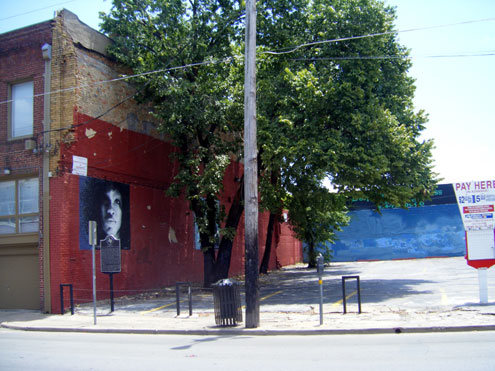
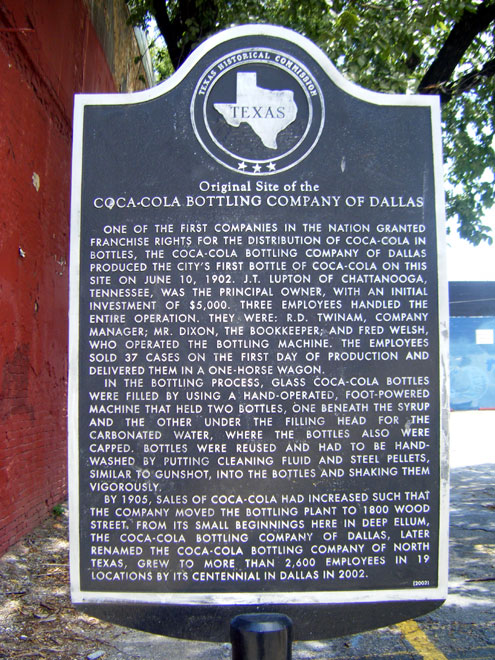
As the number of bottling plants under his watch grew, Lupton maintained tight control by placing his relatives in charge of them. Pendergrast further writes: "Lupton installed many of his innumerable relations as bottlers all over the Whitehead/Lupton territory. They too became wealthy, establishing the Lupton name as a fixture in the Coca-Cola bottling firmament."
By 1910 C. A. Lupton, more than likely a first cousin to John T., was managing the Dallas plant.
That same year C. A.'s sister, Ruby, was living in Roanoke, Virginia with her husband, Sam Woodson. The 1910 U.S. Census shows that Ruby was keeping house while Sam was peddling shoes as a traveling salesman.
At some point C. A. must have sent word to his sister and brother-in-law that the future of bottling and selling Coca-Cola in North Texas appeared very lucrative.
Sam and Ruby apparently took note. By late 1915 they and their sons, Glenn (born 1911) and Sam Jr. (born 1915), were living in a modest house on South Walnut Street in Sherman.
That same year Sam bought the Sherman Coca-Cola bottling plant, already eight years in operation and located on West Houston Street, from Dr. J. C. Bouge. By 1917 he moved the operation to a new location at the corner of Walnut and Pecan streets.
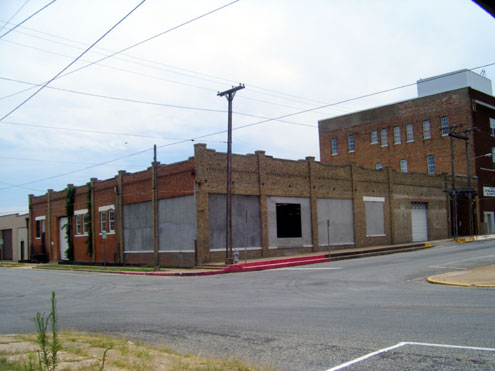
Woodson, no doubt with financial help from the Luptons, turned the Sherman plant into quite a success. The Coca-Cola Bottler, a company publication hereafter referred to as the CCB, of December 1926 quotes a Sherman Democrat article (date not given) as stating that the plant was bottling "145,000 cases of Coca-Cola each year with 24 bottle[s] to the case, employing 20 men, maintaining 6 big trucks, occupying a building 100 feet by 100 feet, and having equipment of the latest type for the greatest possible safety in sanitation and speed in production . . . ." The article further states that "the Coca-Cola Bottling Company of Sherman, with branch houses in several other cities, is a large industry." It also notes: "Sam Woodson, the owner, began operation in Sherman some ten years ago in a small way and now does more than five times as much business as he did then."
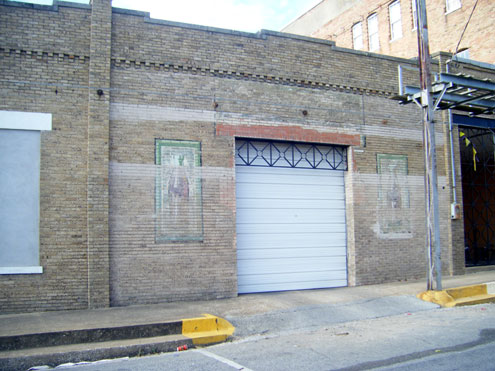
One of the "branch houses in several other cities" was the bottling plant in Bonham. It seems highly likely that among possible investors that Woodson contacted were the Catron Brothers, John and Rush. Anyone familiar with early twentieth century Bonham history knows that the Catrons were willing to invest in almost anything that seemed profitable. Moreover, some Bonham residents recall that the first Coca-Cola bottling plant, the small stone buidling that now houses Riley's Car Upholstery, was located on or near Catron property, not far from the Catron ice house. (At the east end of the Riley's building one can still make out a Coca-Cola sign painted on the stone many decades ago. A similar sign is on the west end as well, but the lettering is faded beyond recognition.)
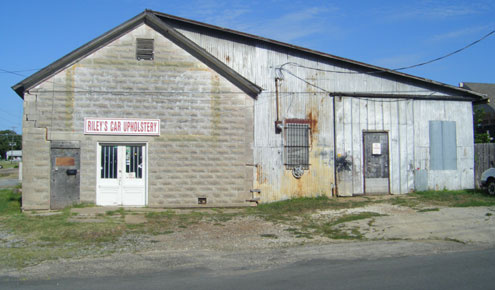
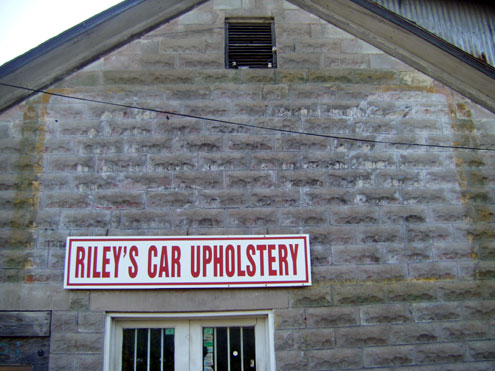
Coca-Cola Archives in Atlanta, Georgia notes that the first gallons of syrup were sent to Bonham in 1919. Ads for bottled soft drinks from the Bonham Coca-Cola plant, including the orange-citrus flavored Orange Squeeze, began appearing in the Bonham Daily Favorite by September 1920. (Coca-Cola no doubt thought it wise to start advertising since Bonham already had Crown Bottling Works, which had been bottling the equally popular Dr. Pepper for several years.)
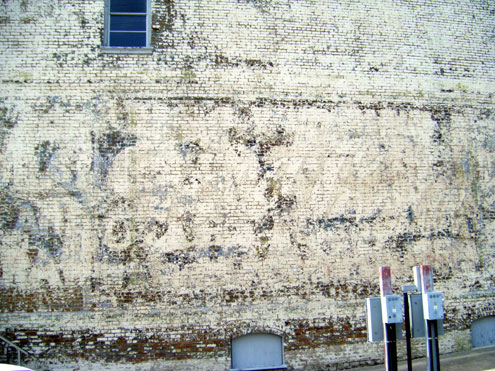
Like Sherman, Bonham's plant proved successful. The CCB of July 1923 states that the Bonham facility "is equipped as a thoroughly modern plant. The territory is showing a good increase."
For the Woodson family Coca-Cola was apparently liquid gold. The 1930 census shows that they moved from their house on South Walnut in favor of a new and much larger residence in the posh neighborhood of North Hopson Street.
Moreover, as Glenn and Sam came of age, they got their post-high school educations at the best of schools. Glenn attended Austin College and eventually graduated from the Virginia Military Institute. Sam followed a similar path through UT Austin and the Wentworth Military Academy in Lexington, Missouri. They both followed their father's footsteps into the Coca-Cola bottling business.
With the success, however, came a personal setback when Ruby Woodson died in 1930 at the relatively young age of 39. Her obituary, appearing in the Sunday, February 9, 1930 Sherman Daily Democrat, states that she had "been a well known society woman in Sherman" for twelve years. Among her survivors were two brothers, the aforementioned C. A. Lupton (then managing the Coca-Cola plant in Fort Worth), and T. C. Lupton (in charge of the Dallas plant).
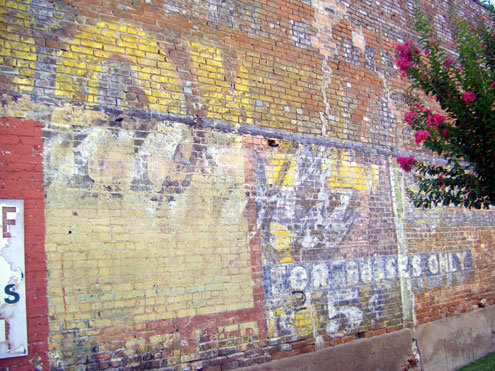
Following his wife's untimely death, Sam Woodson returned immediately to work. The CCB of November 1933 states: "The Coca-Cola plant at Bonham, Texas, recently entertained Coca-Cola dealers in that territory. Mr. Woodson of Sherman, Texas, addressed the dealers." (Perhaps Woodson was addressing the dealers at a new location? Many Bonham residents recall that the second bottling plant was behind the former J. C. Penney building, roughly where the drive-thru lanes for American Bank are now. When the move to the second plant took place is unknown. A 1938 business directory shows the address to be 119 West Fifth Street.)
More evidence of Woodson's hands-on approach comes in the CCB of June 1939, which states that he had chosen Wallace Hill, another Sherman resident, to be the new "manager of the Coca-Cola Bottling Co., Bonham, Texas."
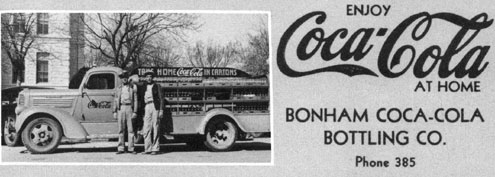
By the early 1940s Sam Woodson began having health problems. On the night of July 12/13, 1943 Woodson died while at home. His obituary, appearing along with a photograph on page one of the July 13, 1943 Sherman Daily Democrat, states that he "had been suffering from heart trouble periodically but had been getting out for limited activities."
Management of the Coca-Cola bottling plants under Sam Woodson's watch, which also included Durant, OK and possibly others that this writer isn't aware of, basically fell to his sons. They had gained management experience at other Lupton family plants, Glenn in Houston and Sam in Galveston.
For Glenn Woodson, oversight of his father's original plants became easier when he was transferred from Houston and placed "in charge of the Fort Worth district," according to the January 1945 CCB.
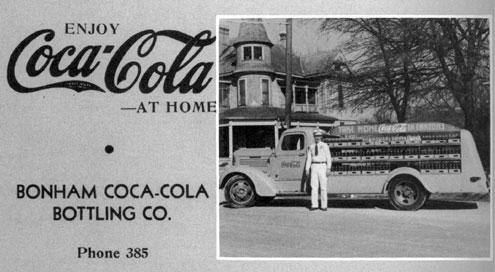
One of the first orders of business for Bonham Coca-Cola Bottling Co. was the building of a new plant that could handle the anticipated extra production needed to meet the expected rise in soft drink sales in the post-WWII era. Glenn Woodson further decided that it was time that a formal contract be drawn up between Bonham Coca-Cola and the Coca-Cola Company 1903. A copy of the contract, obtained from Coca-Cola Archives, shows it was "entered into" on August 20, 1947. The signatures at the bottom show Glenn Woodson as Bonham's vice-president, and Sam Woodson, Jr. as secretary.
No sooner was the ink dry on the contract than construction began on the new plant. It was finished by early 1948. Page one of the February 2, 1948 Bonham Daily Favorite states that the "Bonham Coca-Cola Bottling Co. began moving to its new plant on Highway 78 just north of the city limits Sunday." It notes that a "large portion of the machinery was moved at that time" with other equipment to "be moved to the new location in the next few days." The move from the "downtown location" was briefly noted in the May 1948 CCB as well.

The Sherman and Bonham plants continued to bring the Woodson brothers financial success throughout the 1950s. However, tragedy struck in 1959 when Glenn, only 48 years old, died of a sudden heart attack at his Fort Worth home.
As might be expected, Sam Woodson, Jr. was transferred from Galveston to fill his brother's shoes in Fort Worth.
Many changes came under Sam Jr.'s watch. According to Sherman business directories, the Sherman plant moved from Walnut and Pecan streets to its present location at Old Frisco Road in either late 1962 or early 1963. By 1974 the bottling contract with the Bonham plant was canceled, and it became strictly a distribution center. By roughly 1980 Sherman lost its bottling contract as well. The Bonham plant was then closed and consolidated with Sherman into a larger distribution center.
Almost as if determined by fate, Sam Woodson, Jr. died not long after the Bonham and Sherman plants went out of the bottling business. His death, on February 18, 1982 in Fort Worth, marked the passing of the last surviving member of the family that put Coca-Cola bottling on the map in Grayson and Fannin counties.
Thanks to Suzie Henderson, and to Harriet Grossman of Coca-Cola Archives (Atlanta, Georgia) for their formidable assistance. Also, thanks to Jean Dodson, docent of the Fannin County Museum of History for bringing the Riley's building to my attention.
Tim Davis teaches for Bonham ISD.